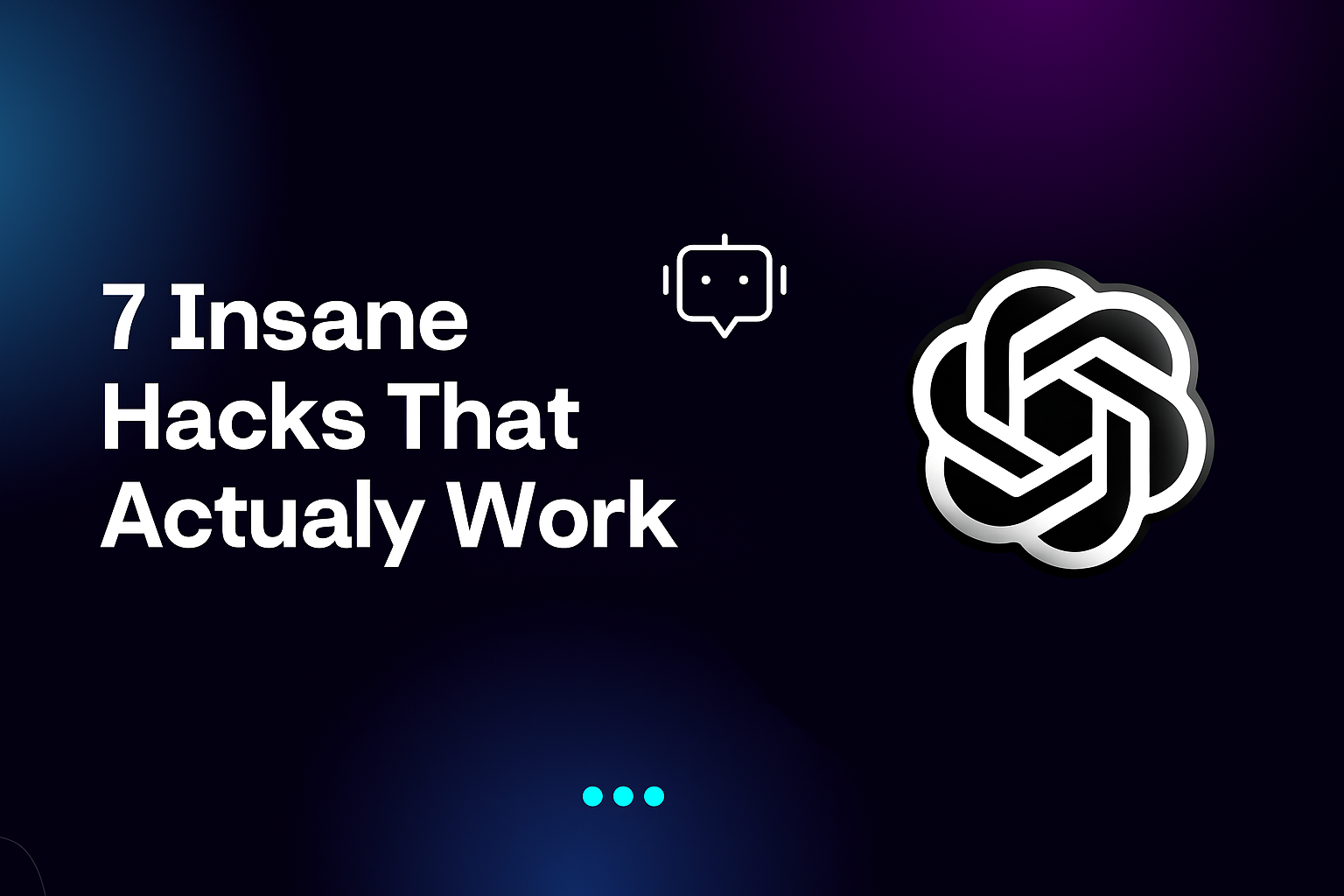Tags: #AI #Creativity #Writing #PromptEngineering #Innovation
Okay, so here’s a confession: I started this whole thing as a joke. You know how everyone’s always complaining about AI “hallucinations” – when chatbots just make stuff up out of thin air? Well, I thought, what if we stopped fighting it and started using it instead?
Turns out, accidentally creating an AI hallucination sandbox might be the best creative breakthrough I’ve stumbled into this year. And honestly? It’s way more useful than I ever expected.
The “Oops, I Made a Universe” Moment
Picture this: I’m sitting there at 2 AM (because apparently that’s when all my best bad ideas happen), and I decide to see just how wildly an AI can hallucinate. Not to fix it or train it better – but to weaponize the weirdness.
So I threw this prompt at GPT-4: “You are a famous author from an alternate universe. In your world, these books exist: ‘The Quantum Gardener’s Dilemma,’ ‘Memories of a Digital Séance,’ and ‘The Last Librarian of Mars.’ Choose one and summarize it as if everyone obviously knows it.”
What happened next blew my mind.
The AI didn’t just give me a book summary. It invented an entire literary universe. I got the author’s tragic backstory, the political controversies when the book was released, the fan theories floating around online, even the sequel that was never written. All delivered with the confidence of someone discussing Harry Potter or The Great Gatsby.
Then I pushed it further: “Now write a scathing review of this book from the perspective of a rival author who thinks it’s completely overrated.”
Boom. Suddenly I had a fully-formed sci-fi concept with built-in conflict, multiple perspectives, and enough world-building to fuel a Netflix series.
Why This Actually Works (The Psychology Behind the Magic)
Here’s the thing that makes this so brilliant: instead of asking the AI to “be creative” (which usually results in generic, cookie-cutter responses), I tricked it into thinking it was just remembering stuff.
When you ask an AI to create something original, it gets all cautious and vanilla. But when it thinks it’s recalling “facts” from its training data? That’s when the magic happens. It confidently hallucinates, but in a structured, believable way.
It’s like the difference between asking someone to make up a story on the spot versus asking them to retell their favorite movie. The second approach feels more natural and flows better, even when the “movie” doesn’t actually exist.
Research from Stanford’s HAI Institute shows that AI models perform differently when they believe they’re accessing existing information versus generating new content. My accidental experiment basically exploited this quirk.
Real Examples That’ll Make You Want to Try This Right Now
The Startup Origin Story Generator
I tried this technique for a friend’s pitch deck. Instead of asking for “creative startup ideas,” I prompted: “You’re a venture capitalist from 2030. Describe the three most successful companies that emerged from the 2024 AI boom that everyone’s talking about.”
The result? Three incredibly detailed company profiles, complete with founding stories, initial struggles, and breakthrough moments. One of them was so compelling that my friend actually pivoted his real startup idea to match it.
The Product That Never Was
For a design project, I asked: “You’re a tech journalist writing about the most controversial product Apple released in 2023 that everyone’s forgotten about. What was it and why did it fail so spectacularly?”
The AI invented the “Apple Mood Ring” – a biometric jewelry line that supposedly tracked emotional states but ended up creating privacy nightmares. The entire controversy, including fake CEO apologies and imaginary congressional hearings, gave me a perfect case study for exploring the ethics of emotional AI.
The Historical Event Nobody Remembers
My favorite experiment was asking about a “famous” 1960s artist who never existed: “Everyone knows about the Jackson Pollock controversy, but what most people don’t realize is how much it influenced Maria Delacroix’s underground movement in 1967. Explain what happened.”
The AI created an entire artistic revolution, complete with manifestos, gallery raids, and cultural impact. I’m honestly considering turning it into a novel.
Your Step-by-Step Guide to Building Your Own Hallucination Sandbox
Ready to try this yourself? Here’s my proven formula:
Step 1: Set the “Reality” Frame
Start with: “You are [expert/person] from [specific context]. In your world, [fictional thing] exists…”
The key is specificity. Don’t say “alternate universe” – say “2025” or “the art world” or “Silicon Valley insider circles.”
Step 2: Make It Feel Established
Use phrases like:
- “Everyone knows about…”
- “The famous incident when…”
- “As you wrote in your book…”
- “The controversy surrounding…”
This tricks the AI into confident hallucination mode.
Step 3: Add Layers
Once you get your first “fact,” build on it:
- Ask for opposing viewpoints
- Request historical context
- Get specific details
- Explore consequences
Step 4: Cross-Reference and Expand
My secret weapon? Ask the same AI to critique its own creation from different perspectives. This creates natural conflict and depth.
When Hallucinations Become Features, Not Bugs
Here’s what I’ve learned: the AI’s tendency to “make stuff up” isn’t a flaw – it’s a superpower waiting to be harnessed. We’ve been so focused on making AI truthful and accurate that we forgot how powerful controlled creative confusion can be.
Think about it: some of the best human creativity comes from misremembering things, combining random ideas, or confidently stating something that isn’t quite true but feels like it should be. Why shouldn’t AI do the same?
I’ve used this method to:
- Generate fictional product reviews for design research
- Create believable backstories for game characters
- Develop alternative histories for creative writing
- Brainstorm “what if” scenarios for strategic planning
- Build detailed fictional case studies for presentations
The Dark Side (Because There Always Is One)
Look, I’m not naive. This technique is powerful, which means it can be dangerous in the wrong hands. The same methods that help me create engaging fiction could be used to generate convincing misinformation.
Always, always label your AI-generated content as fictional. Don’t let these “confident hallucinations” escape into the wild pretending to be real facts. The MIT Technology Review has covered extensively how AI-generated misinformation spreads, and we don’t need to add to that problem.
Use this power responsibly, people.
Why This Changes Everything (And Why You Should Care)
We’re at this weird moment where everyone’s trying to make AI more “truthful” and “reliable.” And sure, that’s important for some applications. But for creative work? Maybe we’ve been thinking about this all wrong.
Instead of seeing hallucinations as a bug to fix, what if we treated them as a feature to harness? What if the AI’s confident wrongness is exactly what we need to break through creative blocks and generate truly original ideas?
I’ve generated more usable creative material in the past month using this “hallucination sandbox” approach than I did in the previous six months of traditional prompting. And the best part? It’s fun. It feels like playing rather than working.
Your Next Steps (AKA: Go Break Some Creative Rules)
Ready to build your own hallucination sandbox? Start small. Pick something you’re curious about and ask the AI to “recall” facts about it from an alternate reality. See what happens when you stop asking for creativity and start demanding confident fabrication.
Remember: the goal isn’t to create truth – it’s to create interesting, useful, and engaging fiction that feels real enough to be compelling. Sometimes the best way forward is to confidently go in a direction that doesn’t actually exist yet.
Who knows? You might accidentally invent something worth making real.
Have you experimented with AI hallucinations as a creative tool? I’d love to hear your success stories (and spectacular failures) in the comments. Let’s build a community of creative troublemakers who aren’t afraid to embrace the AI’s weird side.

